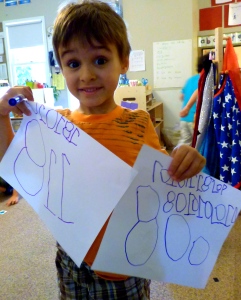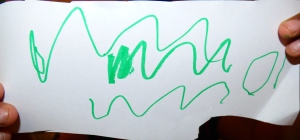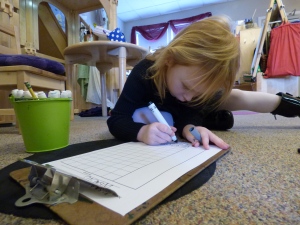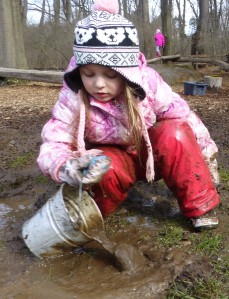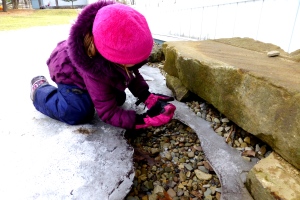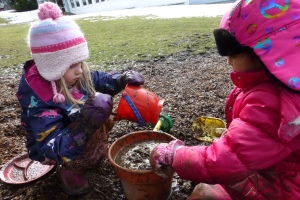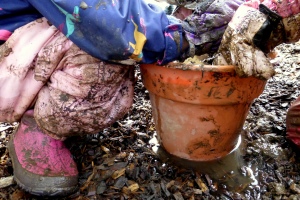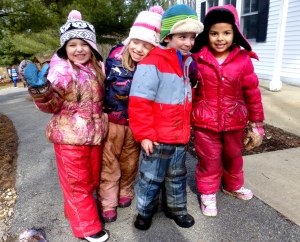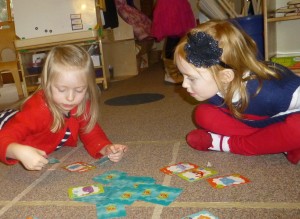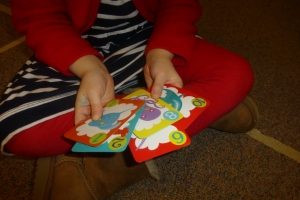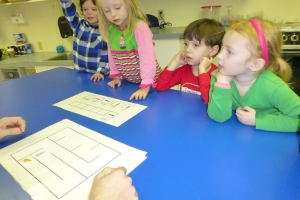 Now that we have a giant pile of keys to rifle through, sorting them into categories seems only natural. In small groups this week, the children are choosing their own classifications and adding keys as they meet the requirements. Today’s group of three children broke off into two sorting sections. One child quickly established his own set of piles while the other two worked as a team to designate key properties.
Now that we have a giant pile of keys to rifle through, sorting them into categories seems only natural. In small groups this week, the children are choosing their own classifications and adding keys as they meet the requirements. Today’s group of three children broke off into two sorting sections. One child quickly established his own set of piles while the other two worked as a team to designate key properties.
After we’d sorted, the children created signs for the categories. The titles are a testament to your children’s creativity and insight. We had groups of “really mini”, “circle-top”, “hammer”, “froggy”, “suitcase” and “oval”. It was quite interesting to see which sets overlapped in characteristics and name.


